Reproduction in Plants for class 7
Reproduction is a fundamental process in all living organisms, including plants. It is the method by which plants produce new individuals of the same species. In this syllabus, we will explore both asexual and sexual reproduction in plants, various methods of reproduction, and processes such as pollination, fertilization, seed dispersal, and germination. By the end of this syllabus, you should have a clear understanding of how plants reproduce and the importance of these processes in the natural world.
Asexual Reproduction in Plants
Asexual reproduction is a type of reproduction that does not involve the fusion of male and female reproductive cells. In this method, a plant produces offspring that are genetically identical to itself. Asexual reproduction is beneficial because it allows for the rapid growth of plants in favorable conditions, but the lack of genetic variation can make the population vulnerable to disease or environmental changes.
1. Binary Fission
Definition: Binary fission is a type of asexual reproduction where a single organism divides into two equal parts, each of which develops into a new individual. This form of reproduction is more commonly found in unicellular organisms like algae, though some plants exhibit this method as well.
-
Example: Algae reproduce through binary fission by dividing their cell contents into two, each forming a new organism.
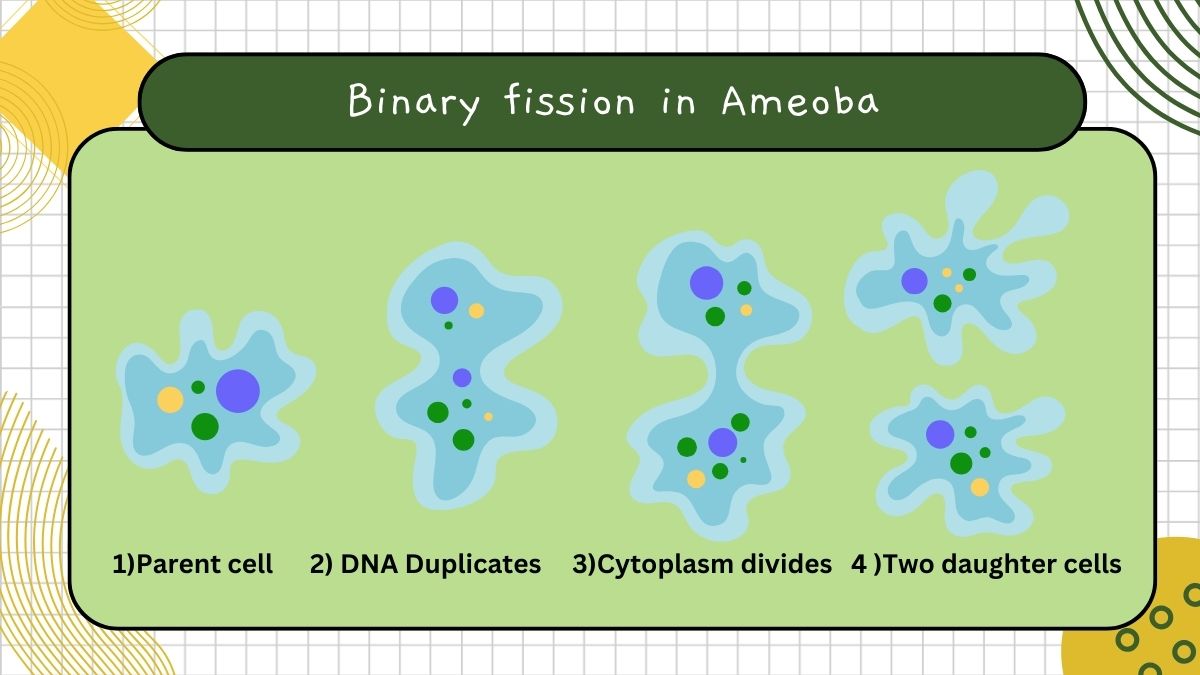
2. Budding
Definition: In budding, a small outgrowth or bud forms on the parent plant, and over time, the bud develops into a new, genetically identical plant. The new plant eventually detaches from the parent and can live independently.
-
Example: Yeast and certain plants like cacti reproduce through budding, where small buds or offshoots form and grow into new plants.
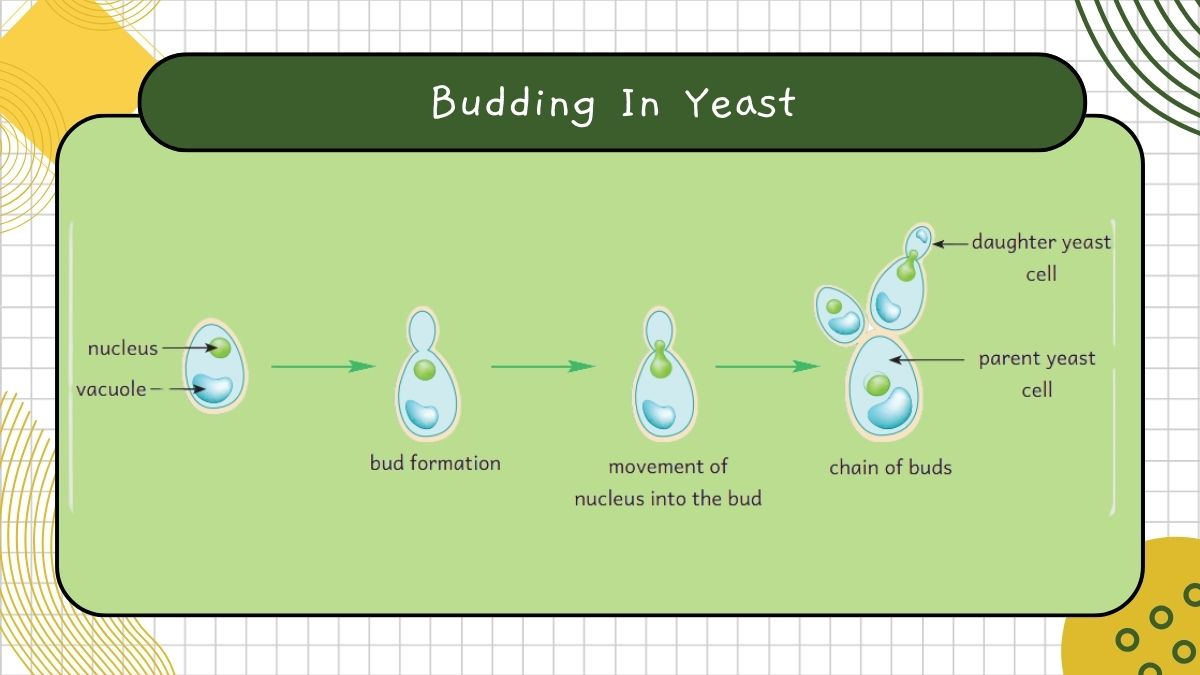
3. Fragmentation
Definition: Fragmentation is a process where a plant breaks into pieces, and each piece can grow into a new individual. This form of reproduction usually happens when parts of a plant, like branches or stems, are broken off and develop into a complete new plant.
-
Example: Certain plants like some mosses and ferns can reproduce through fragmentation, where broken pieces of the plant can regenerate into full new plants.
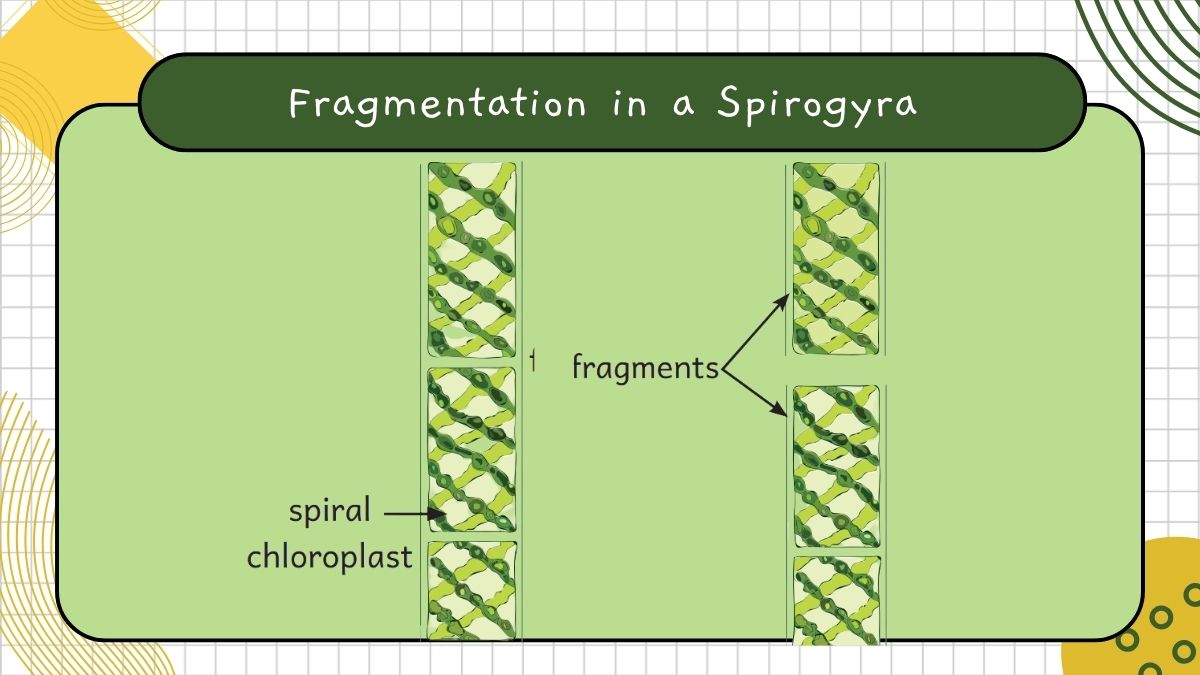
4. Vegetative Propagation
Definition: Vegetative propagation involves the growth of new plants from vegetative parts of the parent plant, such as roots, stems, or leaves. It is the most common form of asexual reproduction in plants and can happen naturally or artificially.
5. Spore Formation
Definition: Some plants, especially non-flowering plants like ferns, reproduce by producing spores. Spores are tiny, single-celled reproductive units that can grow into a new plant under favorable conditions.
-
Example: Ferns and mosses produce spores that are released into the air and can grow into new plants when they land in the right environment.
Natural Methods of Vegetative Reproduction
Vegetative reproduction is a form of asexual reproduction where new plants grow from the vegetative parts (roots, stems, or leaves) of the parent plant. This happens naturally in many plants. The main types of natural vegetative reproduction include:
-
Runner or Stolon: Some plants like strawberries produce horizontal stems called runners that grow along the ground. These runners develop new plants at their nodes.
-
Tuber: Plants like potatoes reproduce through tubers, which are underground storage organs. When a tuber is planted, it can sprout new plants from "eyes" on its surface.
-
Rhizomes: In plants like ginger, rhizomes (underground stems) grow horizontally and produce new shoots that grow into new plants.
-
Bulbs: In plants like onions, bulbs serve as storage organs. New plants grow from the smaller bulbs attached to the main bulb.
-
Leaf-cutting: Some plants, like certain succulents, can produce new plants from a single leaf cutting.
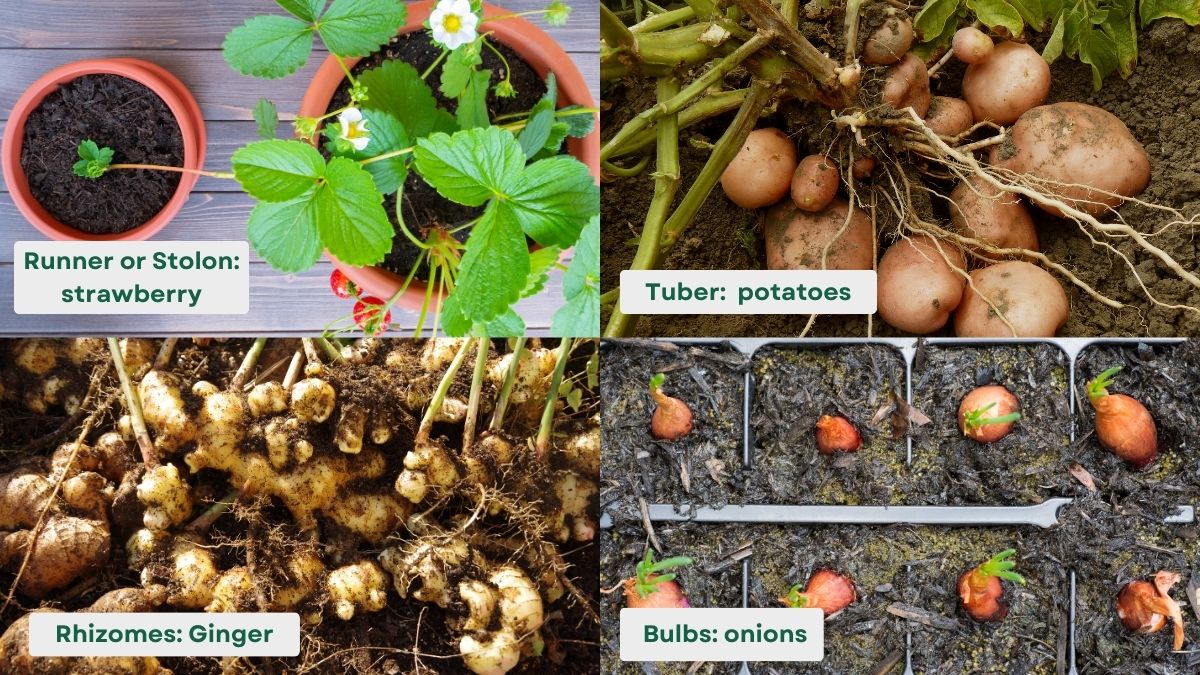
Artificial Methods of Vegetative Reproduction
Humans have learned to harness vegetative reproduction for agriculture and horticulture. These are artificial methods to propagate plants. Some common artificial methods include:
-
Cuttings: A piece of a plant (stem, leaf, or root) is cut off and planted in soil. It will grow into a new plant. Many flowering plants, such as roses, can be propagated this way.
-
Grafting: In grafting, a portion of one plant (the scion) is attached to the stem or rootstock of another plant. The two plants grow together, forming a single plant. Grafting is often used in fruit trees.
-
Layering: In this method, a stem or branch of the parent plant is bent to the ground and partially covered with soil. It will form roots and grow into a new plant. Examples include blackberries and raspberries.
-
Micropropagation: This is a laboratory method that involves taking small pieces of plant tissue and growing them into whole plants in a sterile environment. It is often used to produce large quantities of genetically identical plants.
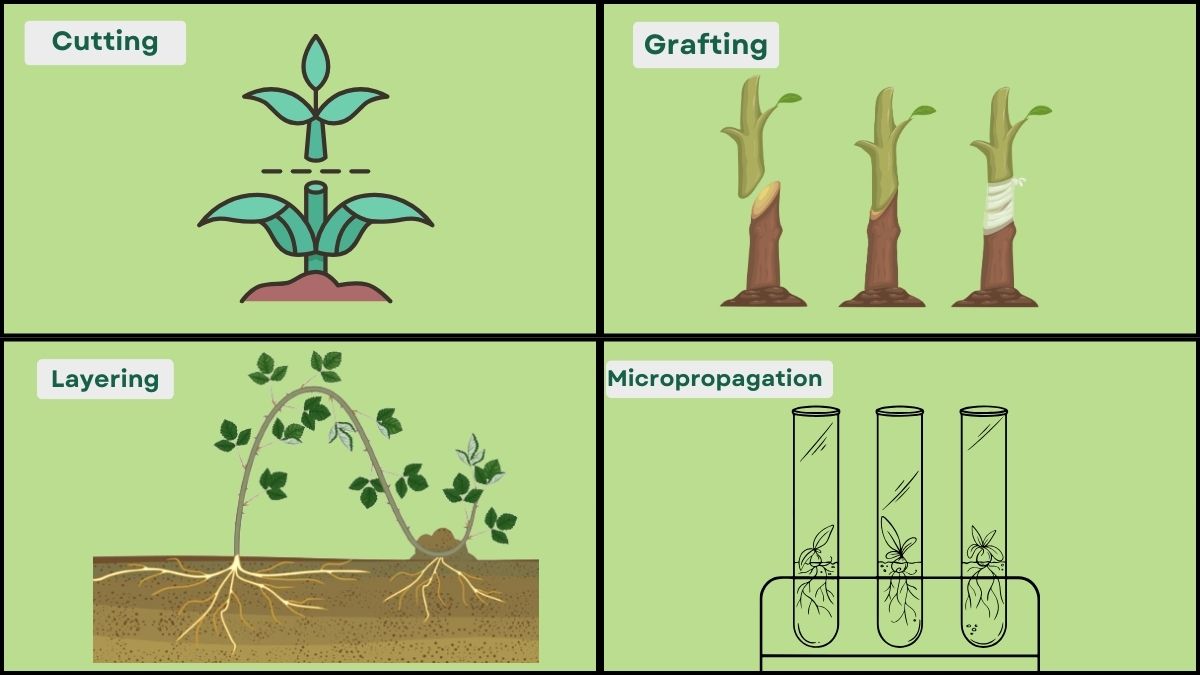
Sexual Reproduction in Plants
Sexual reproduction in plants involves the fusion of male and female gametes (reproductive cells). This process typically takes place in flowers, although some plants may have other reproductive organs. The process begins with pollination, where pollen (male gametes) from one plant reaches the stigma (female reproductive part) of another plant. This is followed by fertilization, where the male and female gametes fuse to form a seed.
Structure of a Flower
The flower is the reproductive structure of most plants. Flowers consist of several parts that play different roles in reproduction. The main parts of a flower are:
-
Petals: The colorful, often fragrant parts of the flower that attract pollinators.
-
Sepals: Small leaf-like structures that protect the flower bud before it opens.
-
Stamen: The male reproductive organ. It consists of the anther (where pollen is produced) and the filament (which supports the anther).
-
Pistil: The female reproductive organ. It consists of the stigma (where pollen lands), the style (the tube leading to the ovary), and the ovary (which contains the ovules, or female gametes).
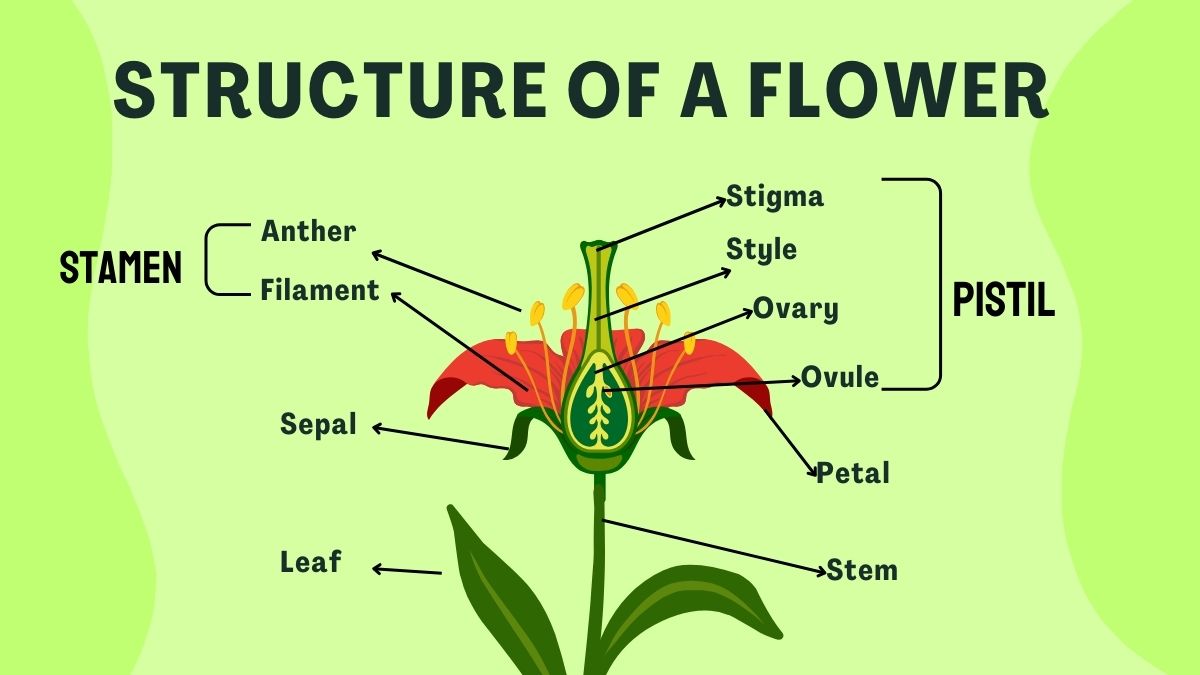
Types of Flowers
-
Complete Flowers: These flowers have all the parts—sepals, petals, stamens, and pistils. Examples include lilies and roses.
-
Incomplete Flowers: These flowers lack one or more parts. For example, a flower that only has male reproductive organs (stamens) but no female reproductive organs (pistils) is considered incomplete.
-
Unisexual Flowers: These flowers have only one reproductive organ. Examples include holly plants, where there are separate male and female flowers on different plants.
-
Bisexual Flowers: These flowers contain both male and female reproductive organs. Most flowers are bisexual.
Reproductive Structures Other Than Flowers
Some plants, especially non-flowering plants, do not reproduce through flowers. These plants have different reproductive structures:
-
Cones: Conifers (like pine trees) reproduce using cones. Male cones produce pollen, while female cones contain ovules.
-
Spores: Non-flowering plants like ferns and mosses reproduce using spores. Spores are tiny reproductive cells that can grow into a new plant under the right conditions.
Pollination
Pollination is the transfer of pollen from the anther of a flower to the stigma of the same or another flower. This is a crucial step in sexual reproduction in plants.

There are two main types of pollination:
-
Self-pollination: This occurs when pollen from a flower lands on its own stigma. This can happen in both complete and incomplete flowers.
-
Cross-pollination: This occurs when pollen from one flower is transferred to the stigma of a different flower, often of a different plant. Cross-pollination promotes genetic diversity.
Agents of pollination
Pollination in plants occurs through various agents, each influencing the structure and behavior of plants. The main agents of pollination include wind, water, animals, and insects. Depending on the pollination method, plants exhibit different adaptations. Here are the types of pollination:
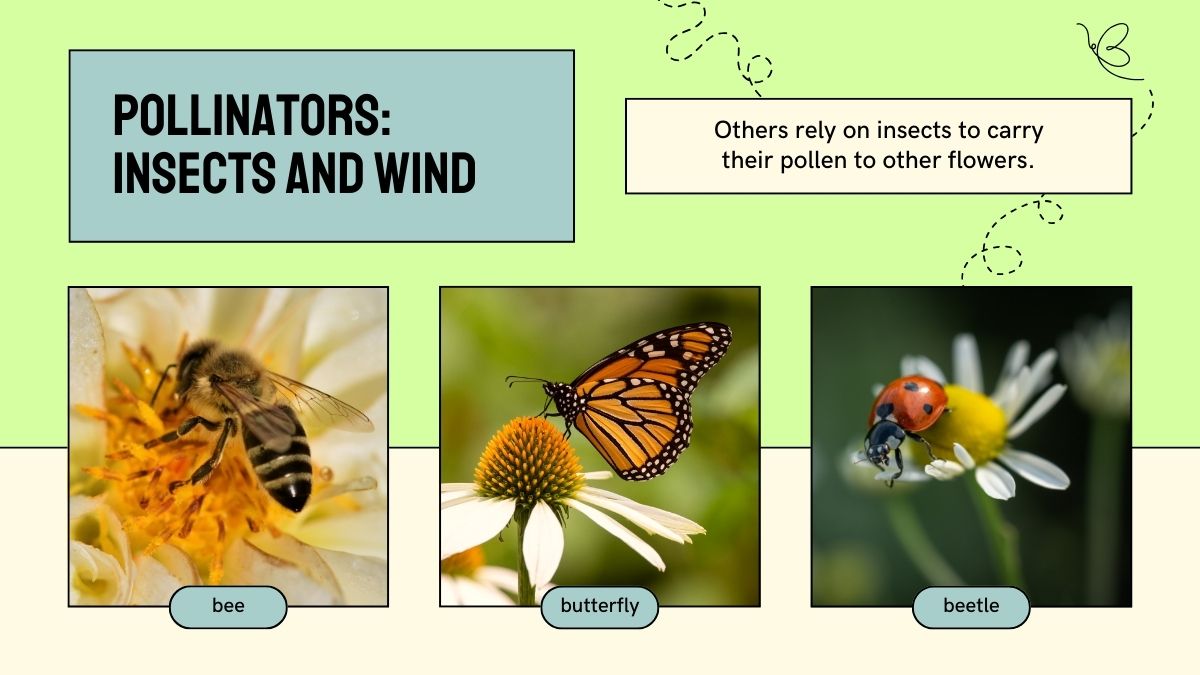
-
Animal Pollination
Birds are prominent pollinators, as they feed on the nectar of flowers and seeds of fruits. Other animals can also transport pollen grains by coming into contact with flowers, transferring pollen from one plant to another. -
Insect Pollination
Insects, such as bees, butterflies, and flies, are attracted to large, brightly-colored flowers with abundant nectar in their nectaries, which are located at the base of the stamens. Flowers pollinated by insects are typically large, vibrant, and fragrant. When insects visit these flowers for nectar, pollen sticks to their bodies and is transferred to the stigma of other flowers, aiding pollination. Examples of insect-pollinated plants include apples, mangoes, onions, and orchids. Honeybees, in particular, account for around 80% of insect-based pollination. -
Water Pollination
Water pollination occurs in aquatic plants like lotus, Vallisneria, and Hydrilla. In these plants, pollen grains are transported by water currents, facilitating pollination. -
Wind Pollination
In wind-pollinated flowers, pollen grains are typically lightweight and non-sticky, allowing them to be easily carried by the wind. These flowers tend to have small or no petals, exposing their anthers and pistils directly to the wind. Common examples of wind-pollinated plants include corn, grass, wheat, and conifers such as pine, fir, and spruce.
Fertilization in Plants
After pollination, fertilization occurs when the male and female gametes fuse to form a zygote. The pollen grain travels down the style and enters the ovule, where the sperm cell fuses with the egg cell. This forms a seed.
Fruit and Seed Formation
After fertilization, the petals, sepals, and stamens of the flower begin to wither and fall off. In many cases, the style and stigma also detach. The ovary remains, and within it, the ovules contain stored food. The fertilized zygote utilizes this food for growth, developing into an embryo. Meanwhile, the walls of the ovules thicken and harden, transforming into seeds.
The fruit is the matured ovary of the flower. As the seeds develop, the ovary enlarges and ripens into a fruit. Fruits can vary in texture and characteristics; some are soft and juicy, while others are dry and hard. The main roles of the fruit are to protect the seeds and aid in their dispersal. In conifers, however, since they lack ovaries, the seeds are not enclosed in a fruiting structure.
Structure of the Seed
-
Seed Coat
The seed coat is the outer layer of the seed that serves as a protective barrier. Its primary function is to safeguard the embryo inside from physical damage and environmental conditions. The seed coat contains a small opening called the micropyle, through which water and oxygen enter during the germination process. -
Cotyledons
Inside the seed, there are one or two food-storing structures known as cotyledons, often referred to as seed leaves. These cotyledons store nutrients that the embryo uses for growth during the early stages of development. Seeds with a single cotyledon are called monocotyledons, while those with two cotyledons are called dicotyledons. -
Embryo
The embryo is the dormant, undeveloped plant contained within the seed, protected by the seed coat and cotyledons. It consists of two main parts: -
Radicle: The part of the embryo that develops into the root system.
-
Plumule: The part of the embryo that grows into the shoot system, eventually forming the stem, leaves, and flowers during germination.
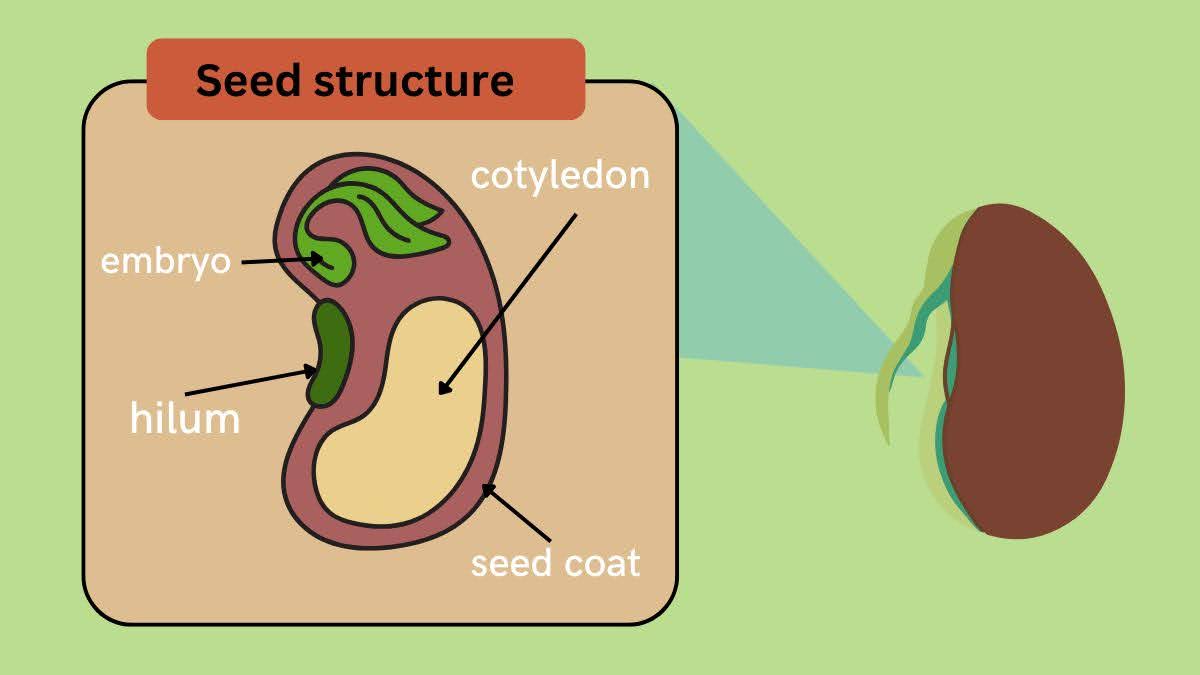
In summary, the seed is a fertilized ovule, and its structure ensures the protection, nourishment, and growth of the embryo into a new plant.
Seed Dispersal
Once fertilization occurs, the plant produces seeds. Seed dispersal is the process by which seeds are spread away from the parent plant to reduce competition for resources. There are several ways that seeds are dispersed:
-
Wind: Some plants, like dandelions, produce seeds with wings that are carried by the wind.
-
Animals: Many plants have seeds with hooks or are inside fruits that animals eat. The seeds are then excreted at a different location.
-
Water: Some plants, like coconuts, float on water and are carried to new areas.
-
Explosive Mechanisms: Some plants, like peas, use a mechanical method to eject seeds from their pods when they mature.
Germination of Seeds
Germination is the process by which a seed develops into a new plant. This happens when the seed absorbs water and begins to sprout. For germination to occur, several conditions must be met: Water, Oxygen, and Temperature
Stages of Germination
-
Absorption of Water (Imbibition)
-
The seed absorbs water through the micropyle.
-
This activates enzymes inside the seed, starting the germination process.
-
Swelling of Seed
-
As the seed absorbs water, it swells and the seed coat softens.
-
The pressure inside the seed increases, which helps break the seed coat.
-
Emergence of Radicle (Root Development)
-
The radicle (embryonic root) is the first part of the seed to emerge.
-
It grows downwards to anchor the seed into the soil and starts absorbing water and nutrients.
-
Growth of Plumule (Shoot Development)
-
The plumule (embryonic shoot) emerges next, growing upwards towards the surface.
-
The shoot will eventually develop into the stem and leaves of the plant.
-
Development of Cotyledons (Seed Leaves)
-
The cotyledons provide food for the embryo until the plant can make its own food through photosynthesis.
-
They may emerge above the soil to help start the process of photosynthesis.
-
Formation of True Leaves
-
After the cotyledons, the true leaves start to form and unfold.
-
The plant begins to produce its own food via photosynthesis.
-
Seedling Stage
-
The seedling continues to grow, developing roots, stems, and leaves, and starts to grow into a mature plant.
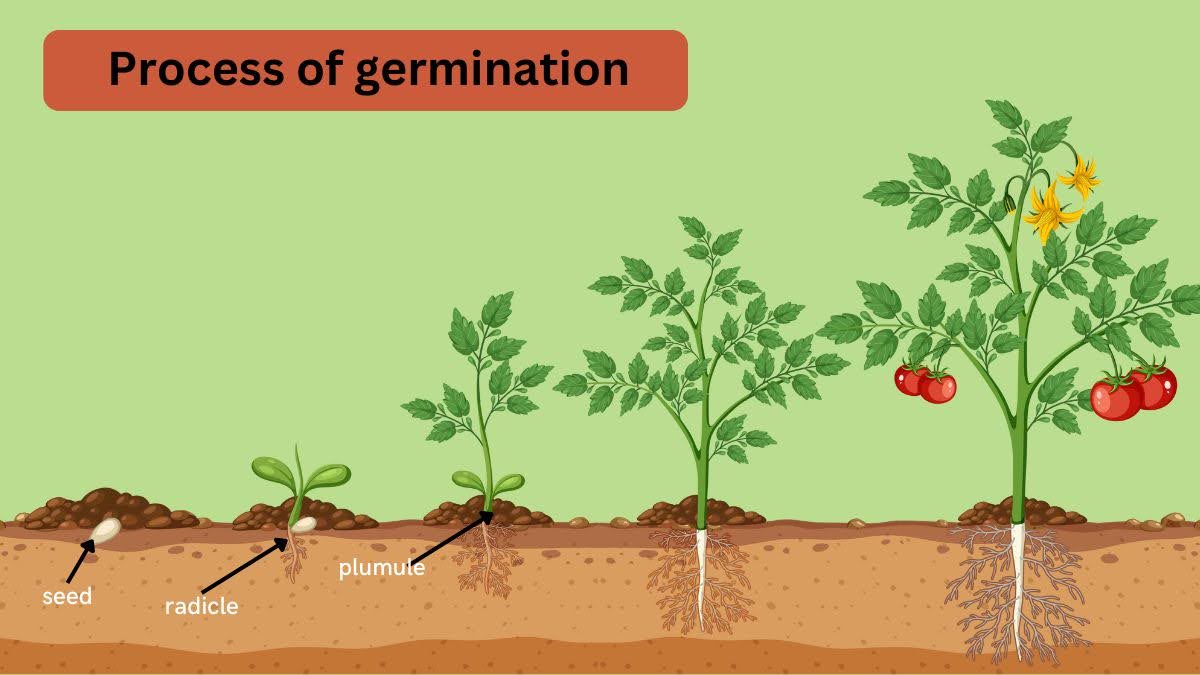
These stages ensure that the seed successfully grows into a new plant under the right environmental conditions.
Fun Facts About Plant Reproduction
-
Bananas don't grow from seeds! They reproduce through cloning.
-
Some plants can live for hundreds of years by reproducing asexually.
-
Coconut palms can travel thousands of miles over the ocean, thanks to their buoyant seeds.
-
The corpse flower (Titan Arum) has one of the largest flowers and smells like rotting flesh to attract pollinators.
Things You Have Learned
- Plants produce offspring by sexual (with seeds) and asexual (seedless) methods.
- Asexual reproduction involves budding, fragmentation, and vegetative propagation.
- Sexual reproduction occurs through flowers through the process of pollination and fertilization.
- Seeds germinate and grow into new plants.
- Techniques such as grafting and cuttings assist in artificial plant reproduction.
CBSE Schools In Popular Cities
- CBSE Schools in Bangalore
- CBSE Schools in Mumbai
- CBSE Schools in Pune
- CBSE Schools in Hyderabad
- CBSE Schools in Chennai
- CBSE Schools in Gurgaon
- CBSE Schools in Kolkata
- CBSE Schools in Indore
- CBSE Schools in Sonipat
- CBSE Schools in Delhi
- CBSE Schools in Rohtak
- CBSE Schools in Bhopal
- CBSE Schools in Aurangabad
- CBSE Schools in Jabalpur
- CBSE Schools in Jaipur
- CBSE Schools in Jodhpur
- CBSE Schools in Nagpur
- CBSE Schools in Ahmednagar
- CBSE School In Tumkur











